Efficient Pilot Decontamination Schemes in 5G Massive MIMO Systems
Abstract
1. Introduction
2. State-of-the-Art Pilot Decontamination Algorithms
3. System Model
3.1. The System Model
3.2. Causes of Pilot Contamination
3.3. IPLUG Algorithm
3.4. Pseudo-Random Code-Based Pilot Scheduling
3.4.1. Uplink
3.4.2. Downlink
3.4.3. Pseudo-Random Code Scheme Description
- The pseudo-random sequence generated by the linear feedback shift register is truncated, and the method is to generate a rectangle depending on the pilot length and using a rectangular window for pseudo-random sequences to make truncation.
- Performing BPSK modulation on the truncated pseudo-random sequence.
- The pseudo-random sequence is diagonalized after modulation, that is, pseudo-random numbers are generated as pseudo-random matrices on the diagonals of the diagonal matrix.
3.4.4. Mean Square Error (MSE) Performance Analysis of Expected Channel Estimation
4. Simulation Results
4.1. Simulation Scenario and Parameters
4.2. Analysis of PLUG Algorithm
4.3. Analysis of IPLUG Algorithm
4.4. Analysis of Pseudo-Random Pilot Scheme
5. Conclusions
Author Contributions
Funding
Conflicts of Interest
References
- Khan, I. A Robust Signal Detection Scheme for 5G Massive Multiuser MIMO Systems. IEEE Trans. Veh. Technol. 2018, 67, 9597–9604. [Google Scholar] [CrossRef]
- Khan, I.; Singh, D. Efficient Compressive Sensing Based Sparse Channel Estimation for 5G Massive MIMO Systems. AEU Int. J. Electron. Commun. 2018, 89, 181–190. [Google Scholar] [CrossRef]
- Khan, I.; Zafar, M.H.; Jan, M.T.; Lloret, J.; Basheri, M.; Singh, D. Spectral and Energy Efficient Low-Overhead Uplink and Downlink Channel Estimations for 5G Massive MIMO Systems. Entropy 2018, 20, 92. [Google Scholar] [CrossRef]
- Khan, I.; Singh, M.; Singh, D. Compressive Sensing-Based Sparsity Adaptive Channel Estimation for 5G Massive MIMO Systems. Appl. Sci. 2018, 8, 754. [Google Scholar] [CrossRef]
- Molisch, A.F.; Win, M.Z.; Winters, J.H. Space-time-frequency (STF) coding for MIMO-OFDM systems. IEEE Commun. Lett. 2002, 6, 370–372. [Google Scholar] [CrossRef]
- Bolcskei, H.; Paulraj, A.J. Space-frequency coded broadband OFDM systems. In Proceedings of the IEEE Wireless Communications and Networking Conference (WCNC), Chicago, IL, USA, 23–28 September 2000; pp. 1–6. [Google Scholar]
- Darsena, D.; Gelli, G.; Paura, L.; Verde, F. Blind Channel Shortening for Space-Time-Frequency Block Coded MIMO-OFDM Systems. IEEE Trans. Wirel. Commun. 2012, 11, 1022–1033. [Google Scholar] [CrossRef]
- Redferm, A.J. Receiver window design for multicarrier communication systems. IEEE J. Sel. Areas Commun. 2002, 20, 1029–1036. [Google Scholar] [CrossRef]
- Darsena, D.; Gelli, G.; Paura, L.; Verde, F. NBI-resistant zero-forcing equalizers for OFDM systems. IEEE Commun. Lett. 2005, 9, 744–746. [Google Scholar] [CrossRef]
- Mergen, B.S.; Scaglione, A. Randomized Space-Time Coding for Distributed Cooperative Communication. IEEE Trans. Signal Process. 2007, 55, 5003–5017. [Google Scholar] [CrossRef]
- Knopp, R.; Humblet, P.A. Information capacity and power control in single-cell multiuser communications. In Proceedings of the IEEE International Conference on Communications (ICC), Seattle, WA, USA, 18–22 June 1995; pp. 331–335. [Google Scholar]
- Mastronarde, N.; Verder, F.; Darsena, D.; Scaglione, A.; van der Schaar, M. Transmitting Important Bits and Sailing High Radio Waves: A Decentralized Cross-Layer Approach to Cooperative Video Transmission. IEEE J. Sel. Areas Commun. 2012, 30, 1597–1604. [Google Scholar] [CrossRef]
- Rusek, F.; Persson, D.; Buon, K.L.; Larsson, E.G.; Marzetta, T.L.; Edfors, O.; Tufvesso, F. Scaling up MIMO: Opportunities and challenges with very large arrays. IEEE Signal Process. Mag. 2013, 30, 40–60. [Google Scholar] [CrossRef]
- Biswas, S.; Xue, J.; Khan, F.A.; Ratnarajah, T. Performance Analysis of Correlated Massive MIMO Systems with Spatially Distributed Users. IEEE Syst. J. 2016, 12, 1850–1861. [Google Scholar] [CrossRef]
- Khan, I. Channel modeling and analysis of OWC-massive MIMO Systems. Opt. Commun. 2018, 434, 209–217. [Google Scholar] [CrossRef]
- Marzetta, T.L. Noncooperative cellular wireless with unlimited numbers of base station antennas. IEEE Trans. Wirel. Commun. 2010, 9, 3590–3600. [Google Scholar] [CrossRef]
- Jose, J.; Ashikhmin, A.; Marzetta, T.L.; Vishwanath, S. Pilot contamination and precoding in multi-cell TDD systems. IEEE Trans. Wirel. Commun. 2011, 10, 2640–2651. [Google Scholar] [CrossRef]
- Ashikhmin, A.; Marzetta, T.L. Pilot contamination precoding in multi-cell large-scale antenna systems. In Proceedings of the IEEE International Symposium on Information Theory Proceedings (ISIT), Cambridge, MA, USA, 1–6 July 2012; Volume 1, pp. 1137–1141. [Google Scholar]
- Liangbin, L.; Ashikhmin, A.; Marzetta, T.L. Pilot contamination precoding for interference reduction in large-scale antenna systems. In Proceedings of the 51th Annual Allerton Conference on Communication, Control, and Computing, Monticello, IL, USA, 2–4 October 2013; Volume 2, pp. 226–232. [Google Scholar]
- Nguyen, T.M.; Le, L.B. Joint pilot assignment and resource allocation in multicell massive MIMO network: Throughput and energy efficiency maximization. In Proceedings of the IEEE Wireless Communications and Networking Conference (WCNC), New Orleans, LA, USA, 9–12 March 2015; pp. 393–398. [Google Scholar]
- Cheng, H.V.; Björnson, E.; Larsson, E.G. Optimal Pilot and Payload Power Control in Single-Cell Massive MIMO Systems. IEEE Trans. Signal Process. 2017, 65, 2363–2378. [Google Scholar] [CrossRef]
- Dao, H.T.; Kim, S. Pilot power allocation for maximizing the sum rate in massive MIMO systems. IET Commun. 2018, 12, 1367–1372. [Google Scholar] [CrossRef]
- Elijah, O.; Leow, C.Y.; Rahman, T.A.; Nunoo, S.; Iliya, S.Z. A Comprehensive Survey of Pilot Contamination in Massive MIMO—5G System. IEEE Commun. Surv. Tutor. 2015, 18, 905–923. [Google Scholar] [CrossRef]
- Hoydis, J.; Brink, S.T.; Debbah, M. Massive MIMO in the UL/DL of cellular networks: How many antennas do we need? IEEE J. Sel. Areas Commun. 2013, 31, 160–171. [Google Scholar] [CrossRef]
- Khan, I.; Zafar, M.H.; Ashraf, M.; Bayati, A.K.S. Computationally Efficient Channel Estimation for 5G Massive Multiple-Input Multiple-Output Systems. Electronics 2018, 7, 382. [Google Scholar] [CrossRef]
- Yin, H.; Gesbert, D.; Filippou, M.; Liu, Y. A coordinated approach to channel estimation in large-scale multiple-antenna systems. IEEE J. Sel. Areas Commun. 2012, 31, 264–273. [Google Scholar] [CrossRef]
- Neumann, D.; Joham, M.; Weiland, L.; Utschick, W. Low-complexity computation of LMMSE channel estimates in massive MIMO. In Proceedings of the 19th International ITG Workshop on Smart Antennas, Ilmenau, Germany, 3–5 March 2015; pp. 1–6. [Google Scholar]
- Ngo, H.; Larsson, E.G. EVD-based channel estimation in multicell multiuser MIMO systems with very large antenna arrays. In Proceedings of the IEEE International Conference on Acoustics, Speech and Signal Processing, Kyoto, Japan, 25–30 March 2012; pp. 3249–3252. [Google Scholar]
- Jin, S.; Wang, Z.; Zheng, L.; Wong, K.; Huang, Y.; Tang, X. On massive MIMO zero-forcing transceiver using time-shifted pilots. IEEE Trans. Veh. Technol. 2016, 65, 59–74. [Google Scholar] [CrossRef]
- Xiong, X.; Jiang, B.; Gao, X.; You, X. QoS-Guaranteed User Scheduling and Pilot Assignment for Large-Scale MIMO-OFDM Systems. IEEE Trans. Veh. Technol. 2015, 65, 6275–6289. [Google Scholar] [CrossRef]
- Dai, X. Optimal training design for linearly time-varying MIMO/OFDM channels modeled by a complex exponential basis expansion. IET Commun. 2007, 1, 945–953. [Google Scholar] [CrossRef]
- Saxena, V.; Fodor, G.; Karipidis, E. Mitigating pilot contamination by pilot reuse and power control schemes for massive MIMO systems. In Proceedings of the IEEE 81st Vehicular Technology Conference, Glasgow, UK, 11–14 May 2015; pp. 1–6. [Google Scholar]
- Zhu, X.; Wang, Z.C.; Dai, L.L.; Qian, C. Smart pilot assignment for massive MIMO. IEEE Commun. Lett. 2015, 19, 1–4. [Google Scholar] [CrossRef]
- Jin, S.; Li, M.; Huang, Y.; Du, Y.; Gao, X. Pilot scheduling schemes for multi-cell massive multiple-input-multiple-output transmission. IET Commun. 2015, 9, 689–700. [Google Scholar] [CrossRef]
- Litvinenko, L. OFDM signal PAPR reduction by pre-scrambling and clipping for frequency domain comb-type channel estimation case. In Proceedings of the 23rd International Conference Radioelectronika, Pardubice, Czech Republic, 16–17 April 2013; pp. 273–277. [Google Scholar]
- Yang, B.; Deng, C.J.; Wu, P.H.; Xi, J.; Shi, L. Image encryption algorithm depending on two-one-dimensional logistic chaotic inter-scrambling systems and m-sequence. In Proceedings of the IEEE International Conference on Software Engineering and Service Science (ICSESS), Beijing, China, 27–29 June 2014; pp. 521–524. [Google Scholar]
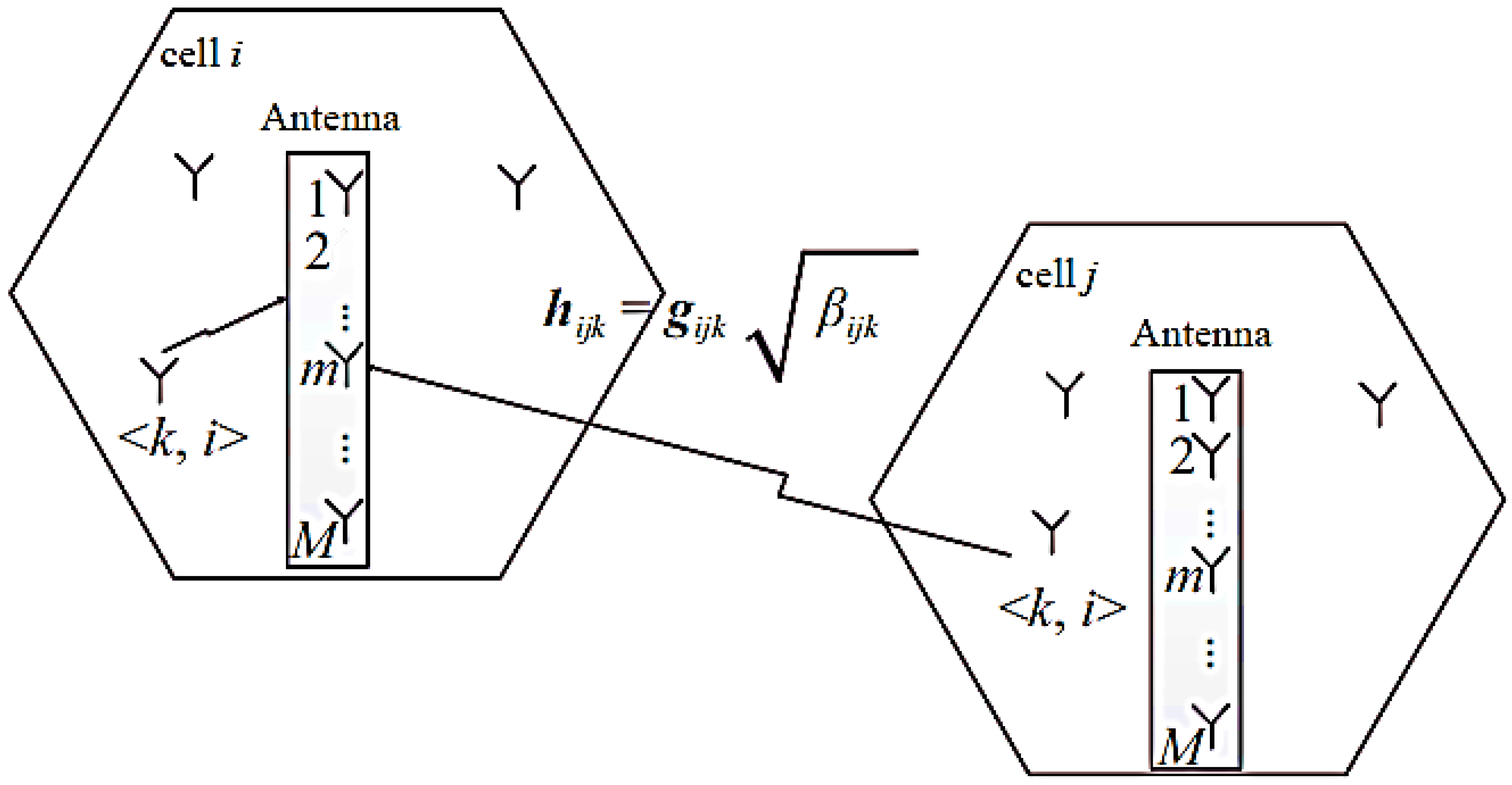
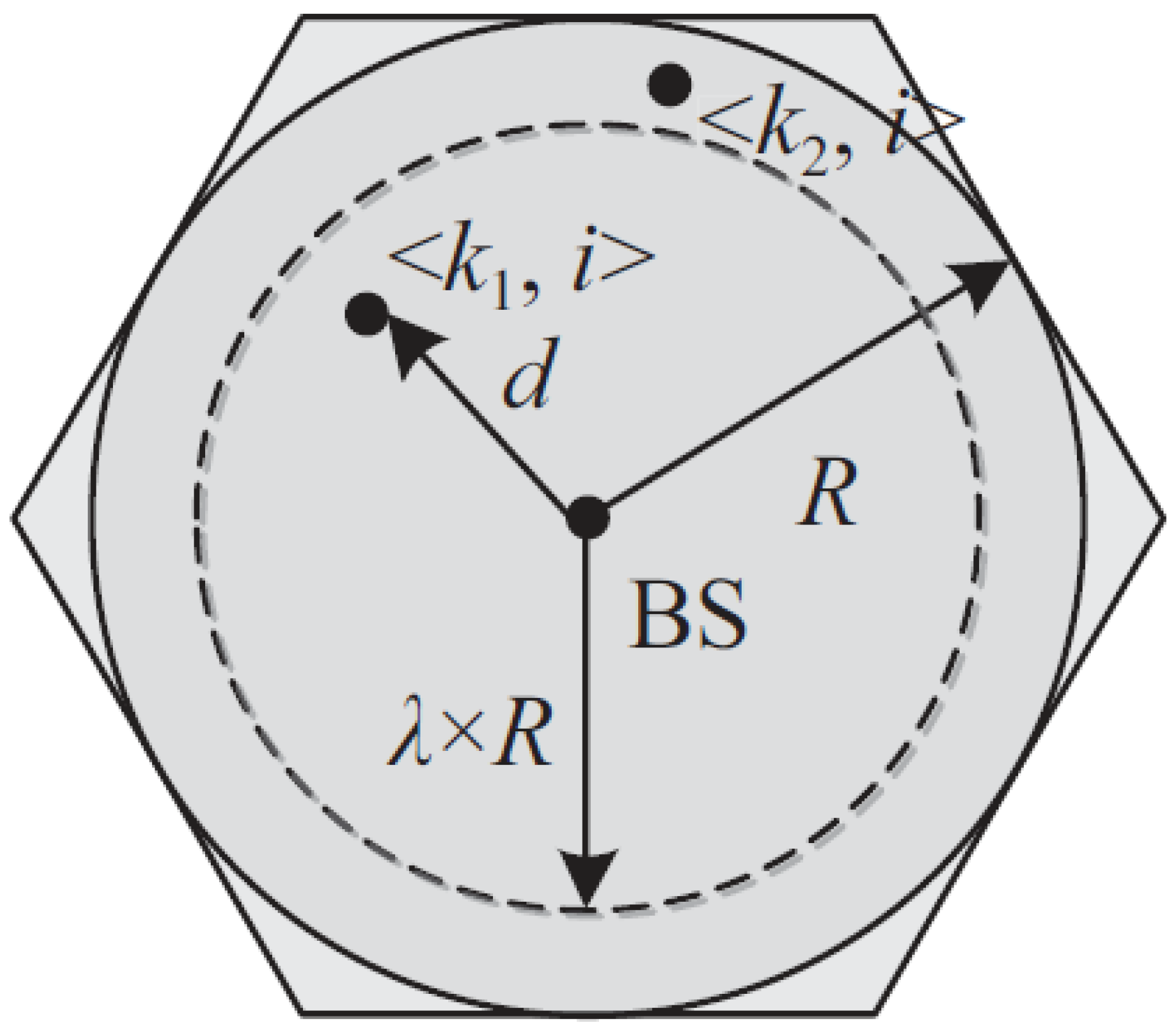
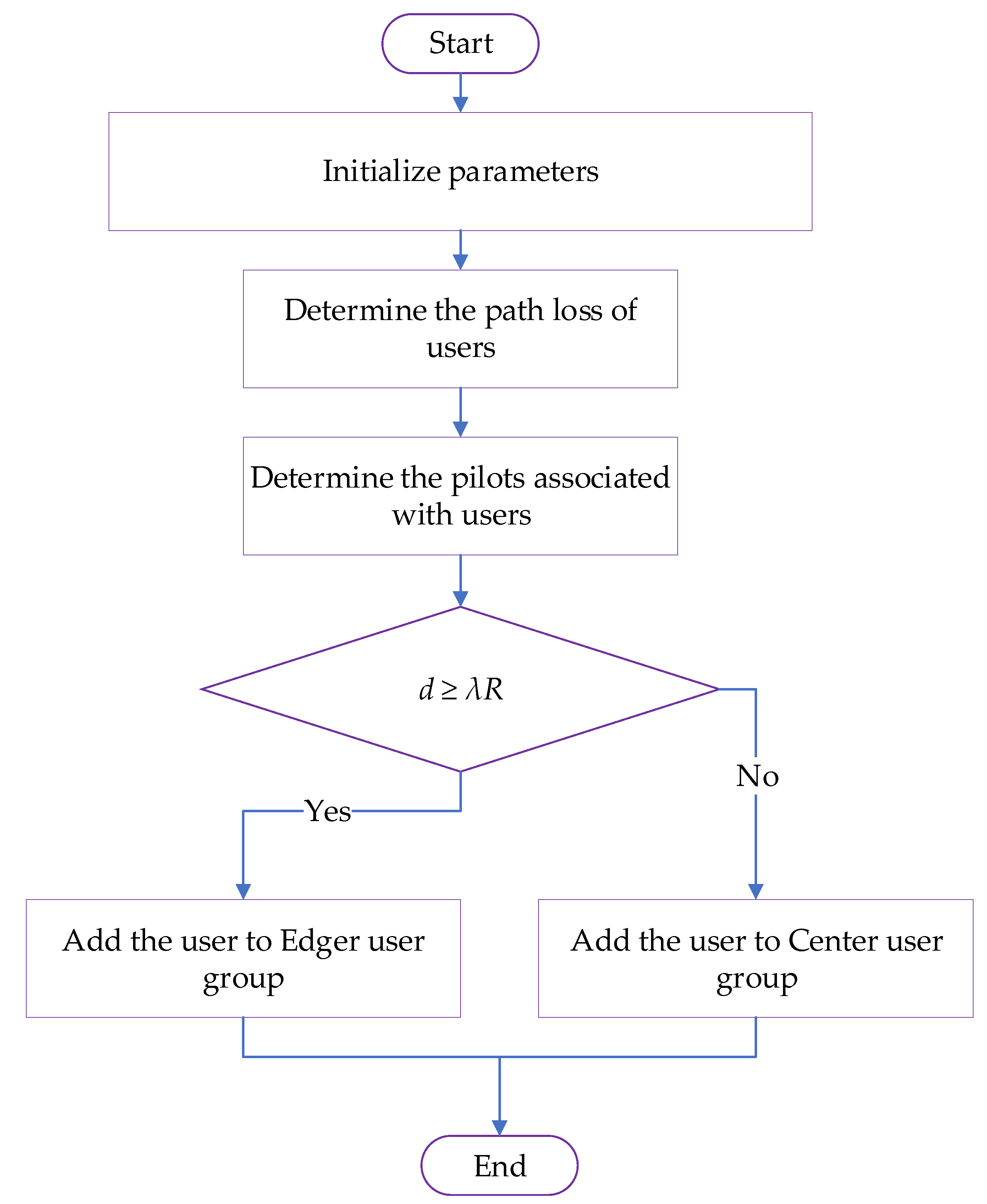

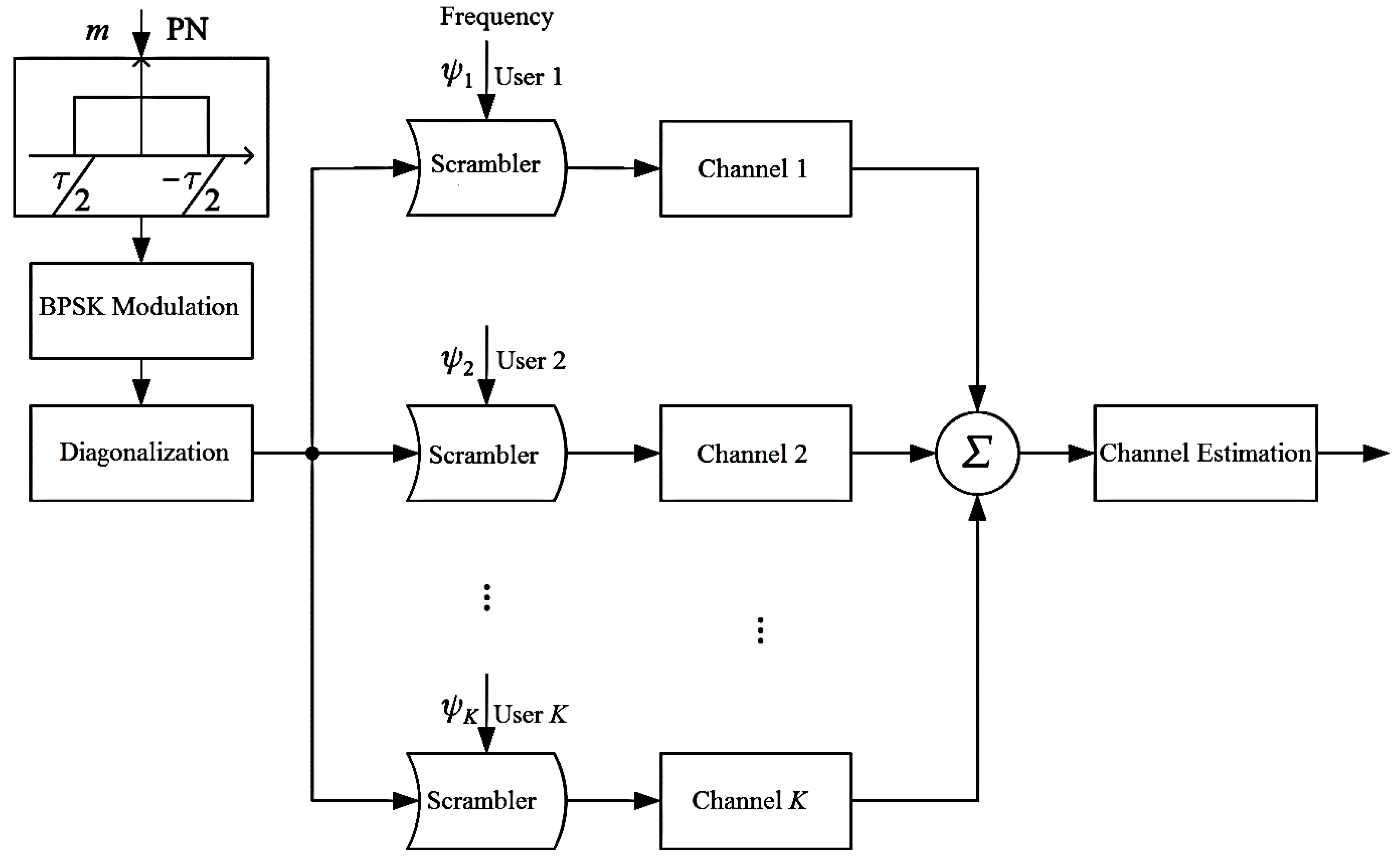
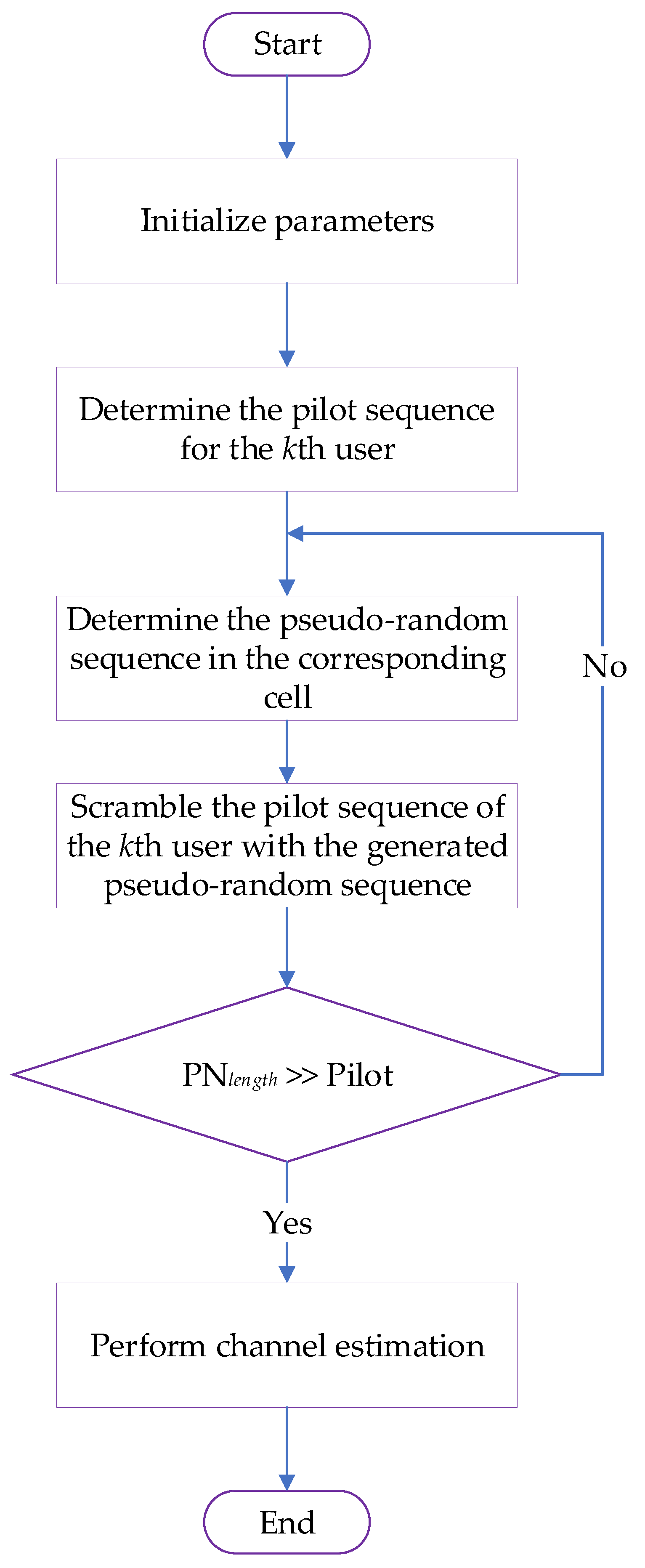
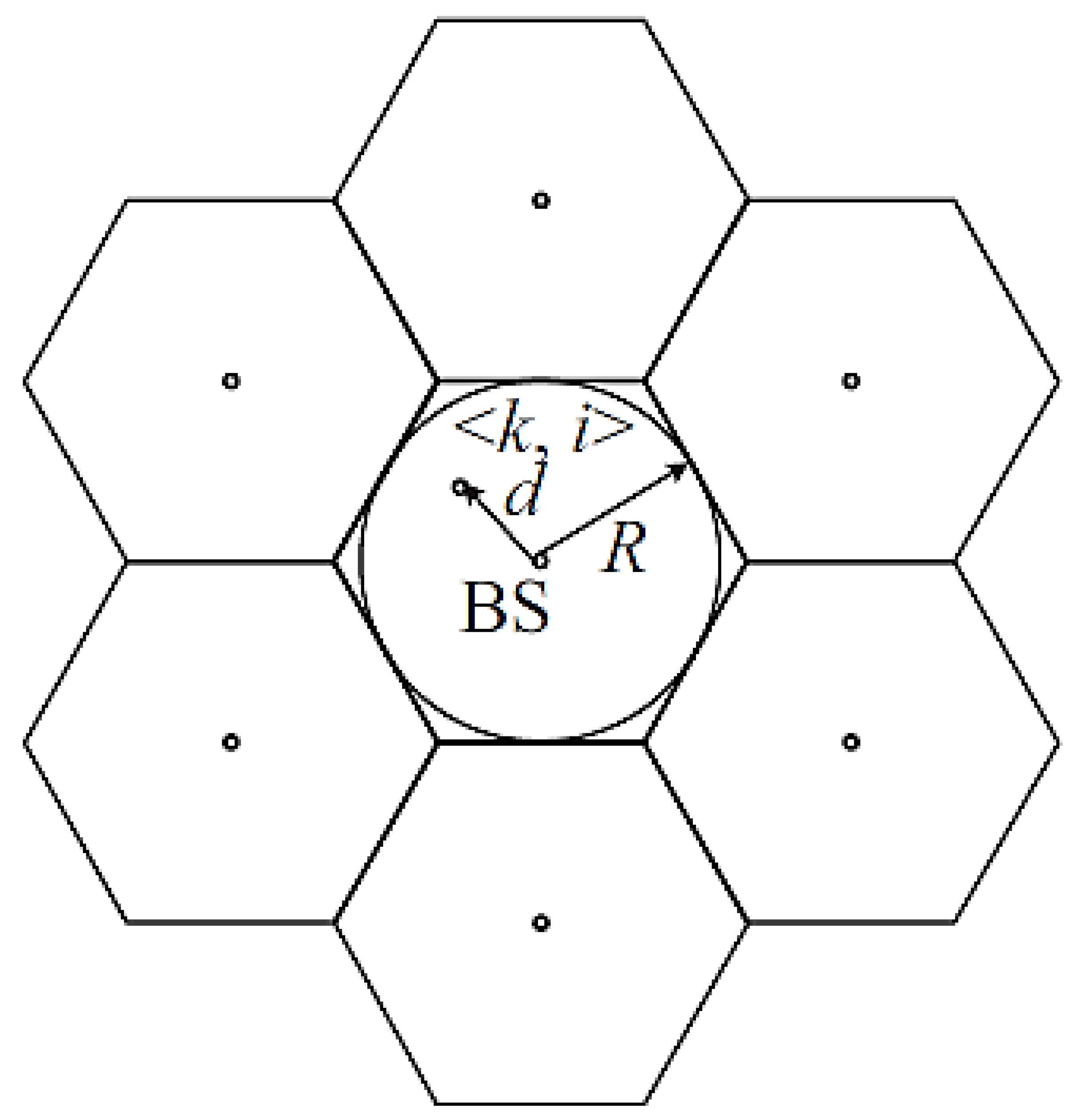

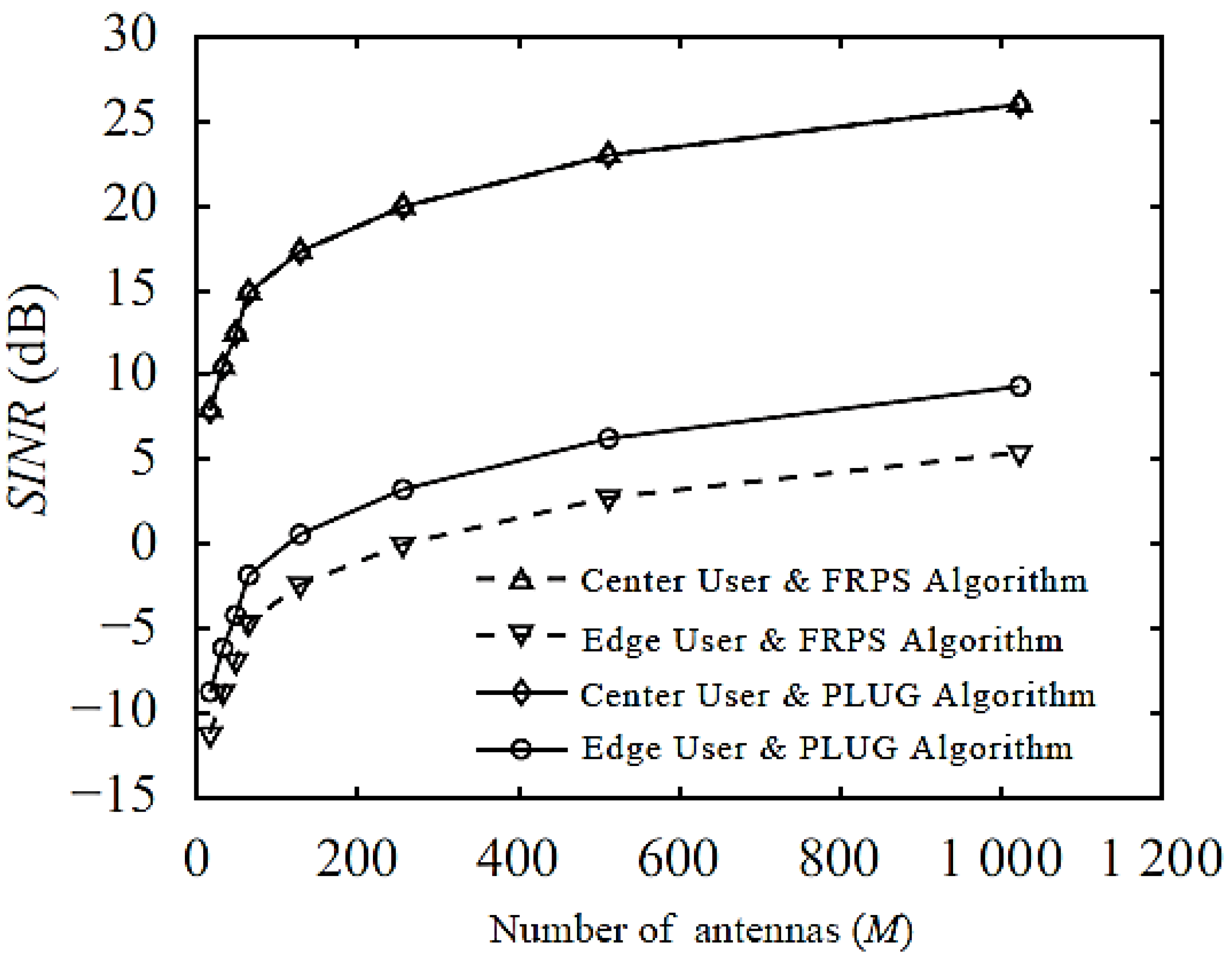

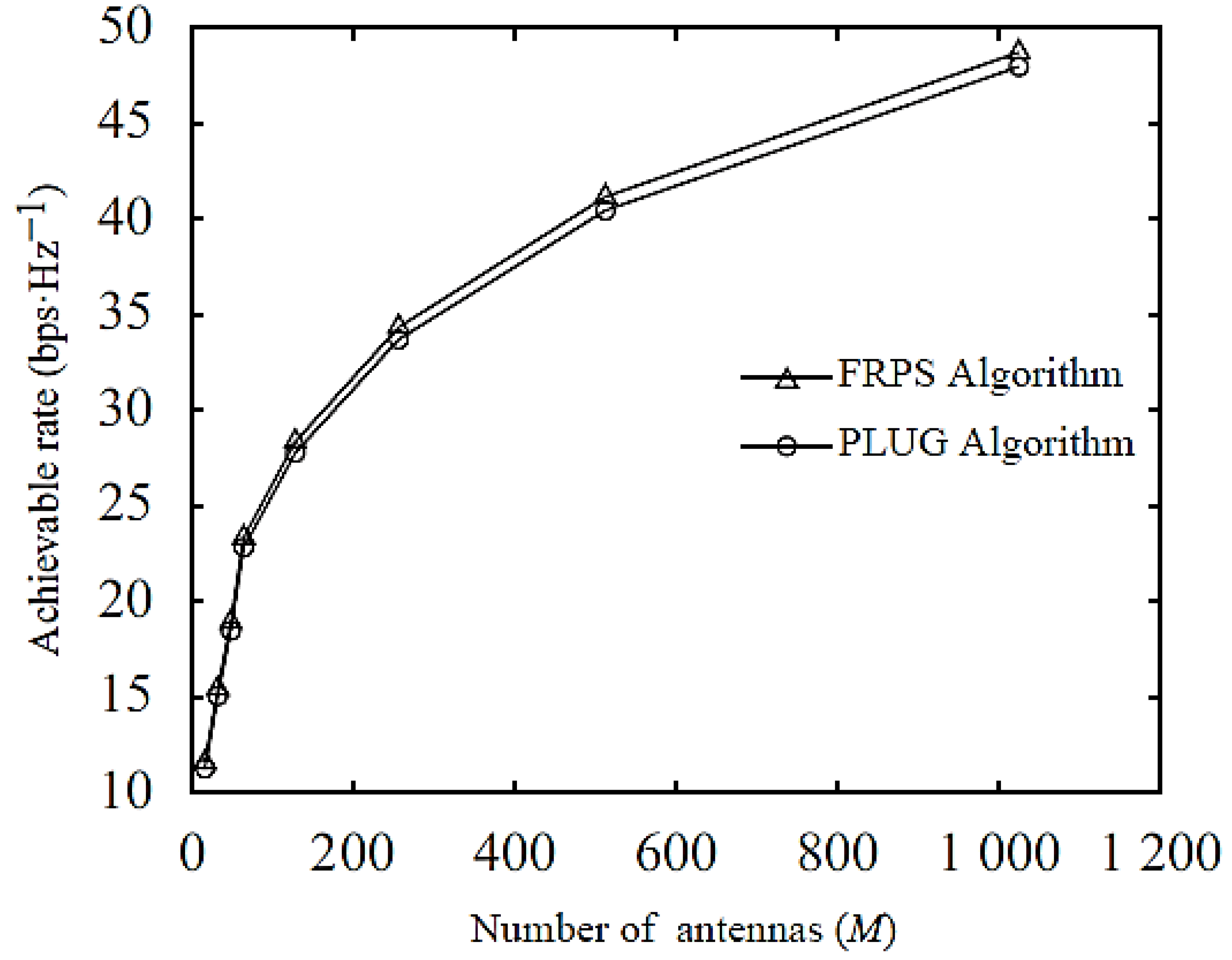
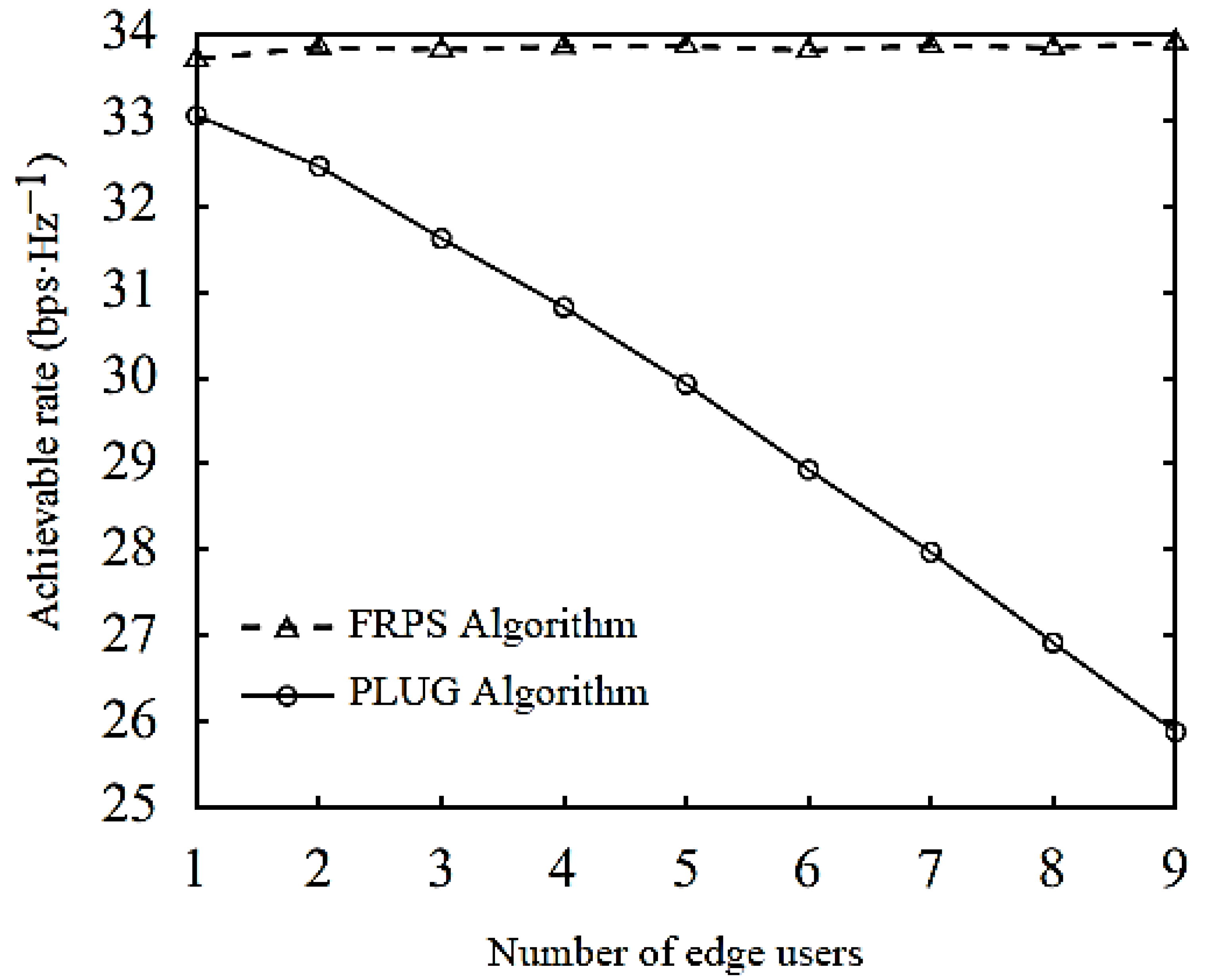
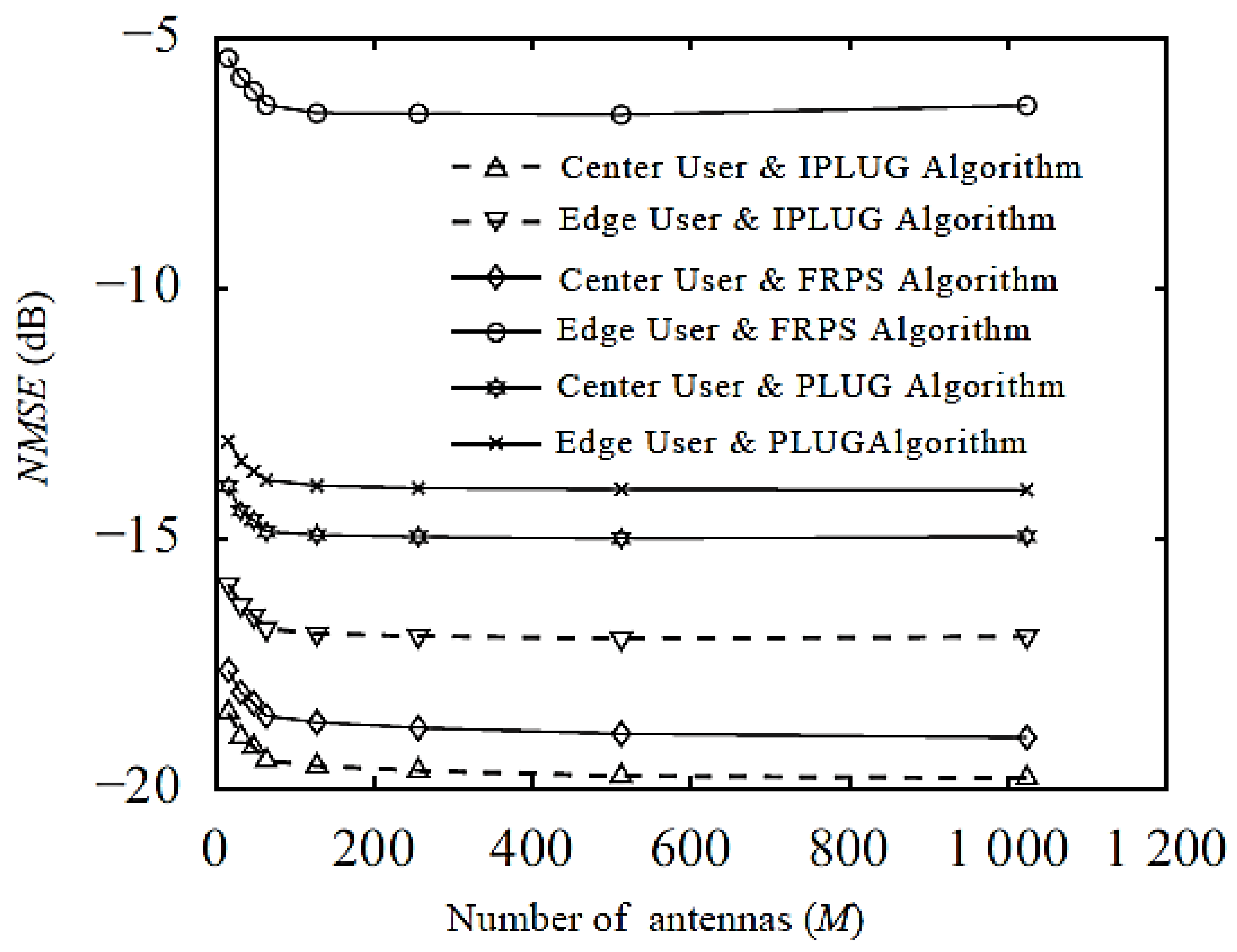
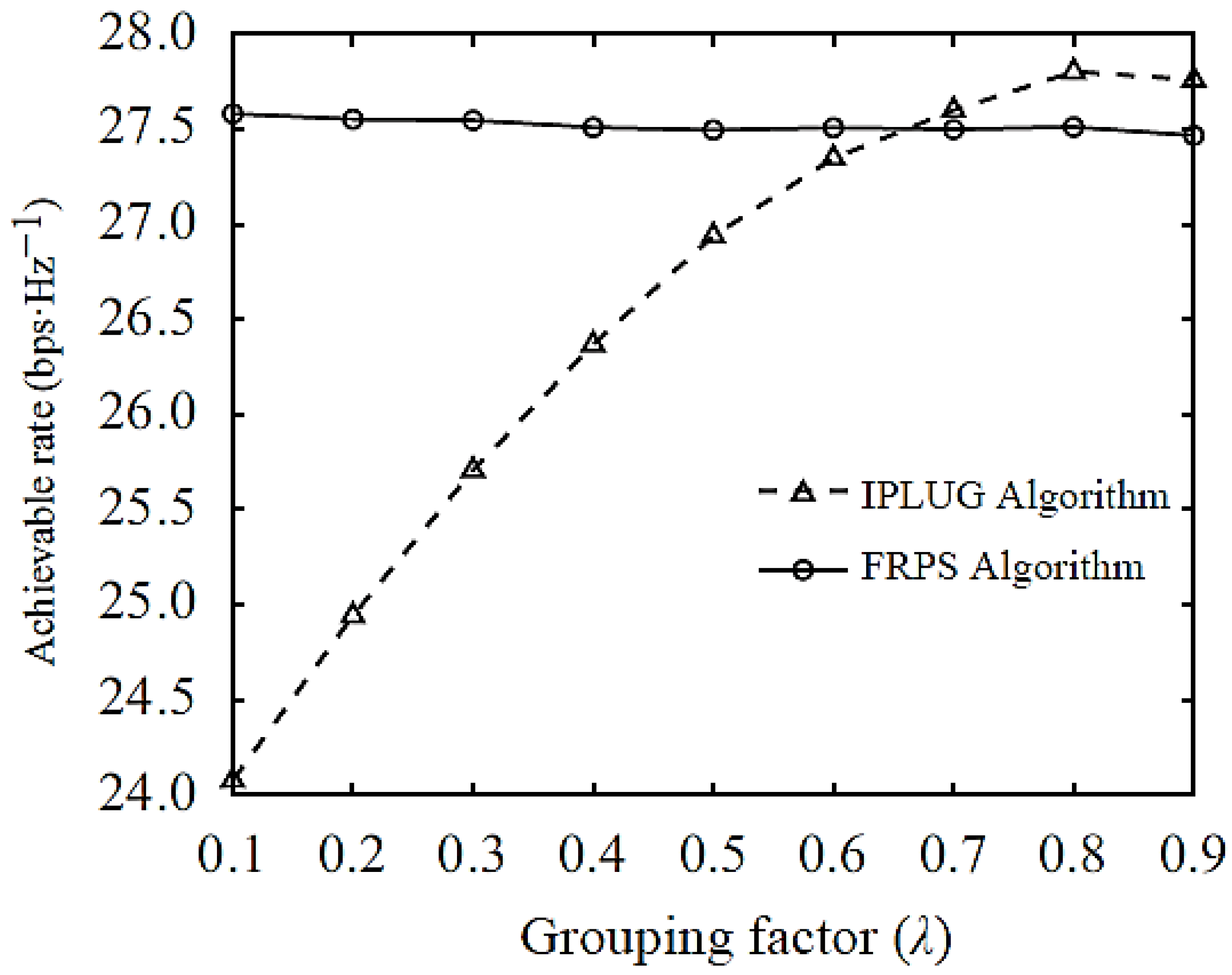
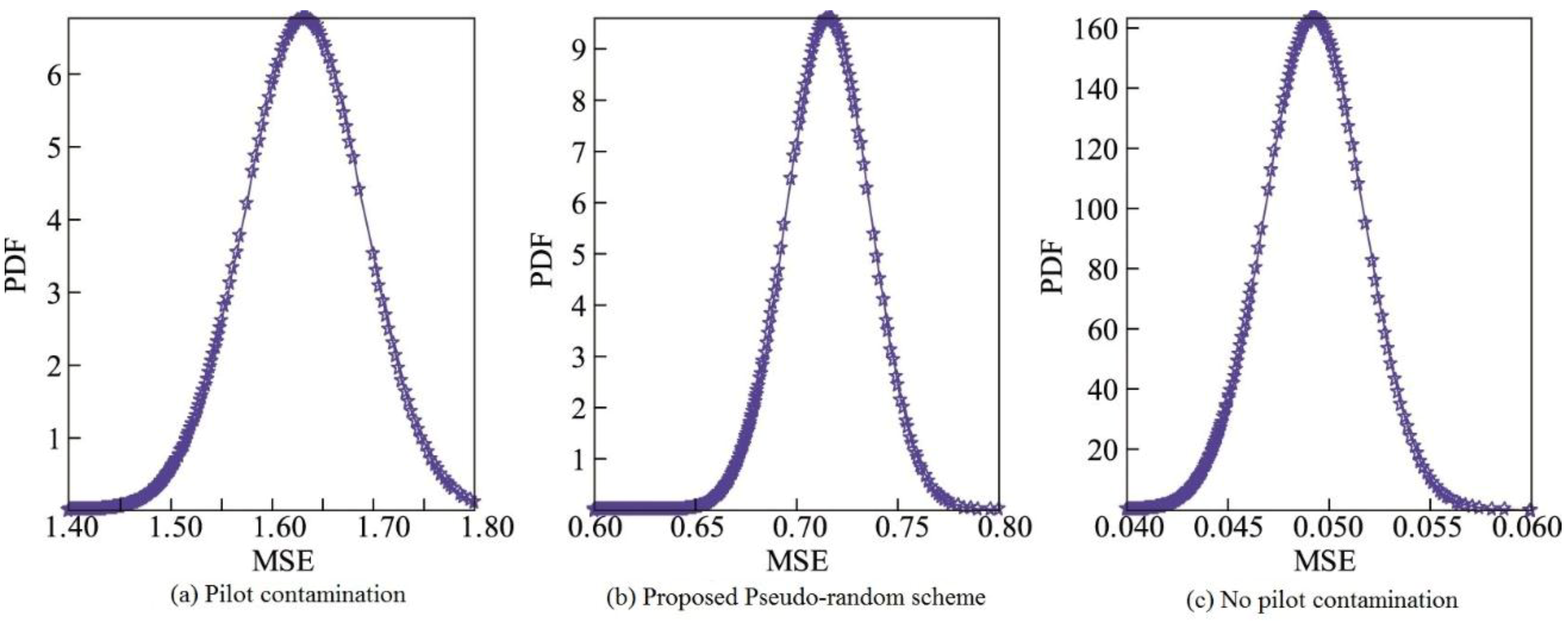

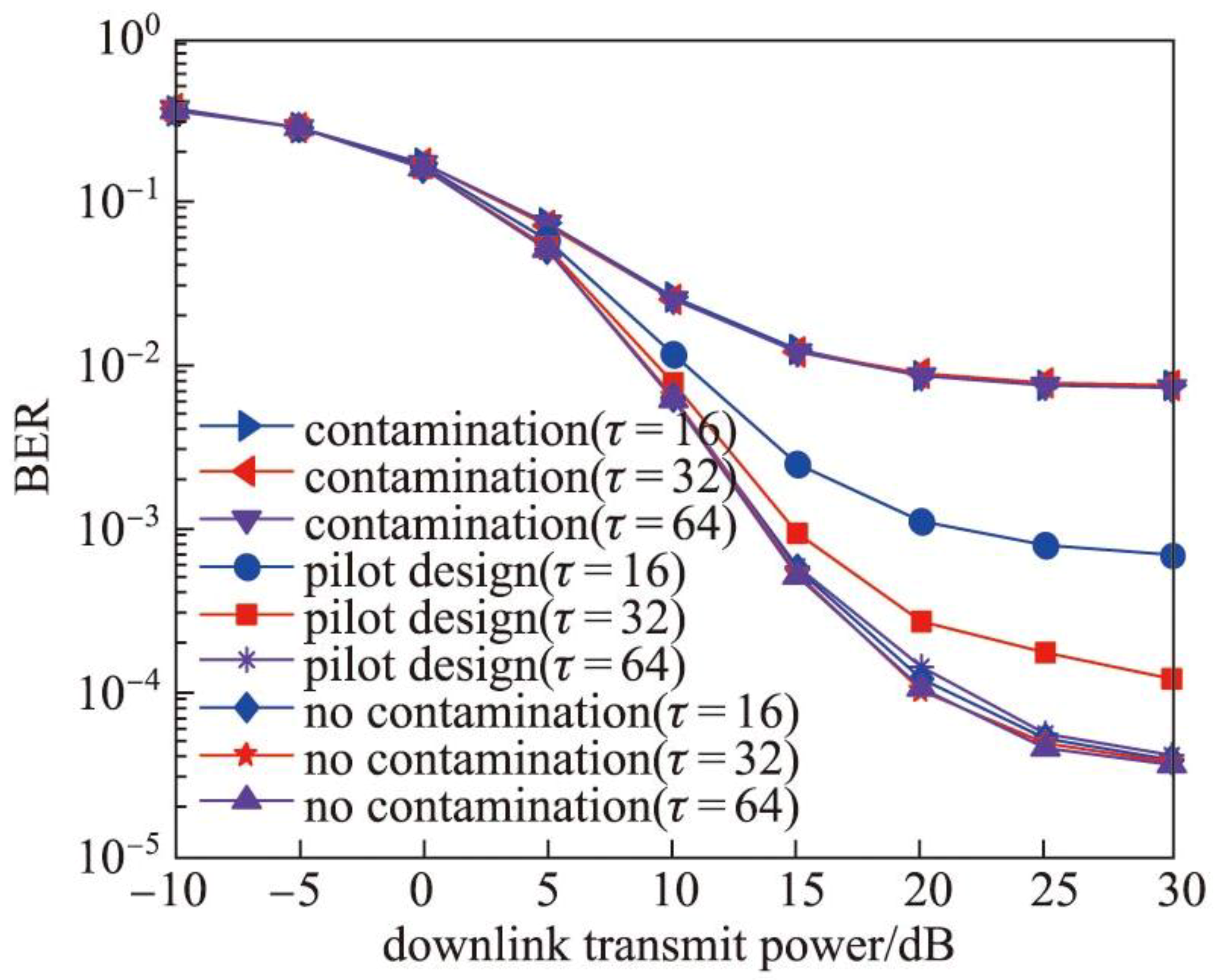
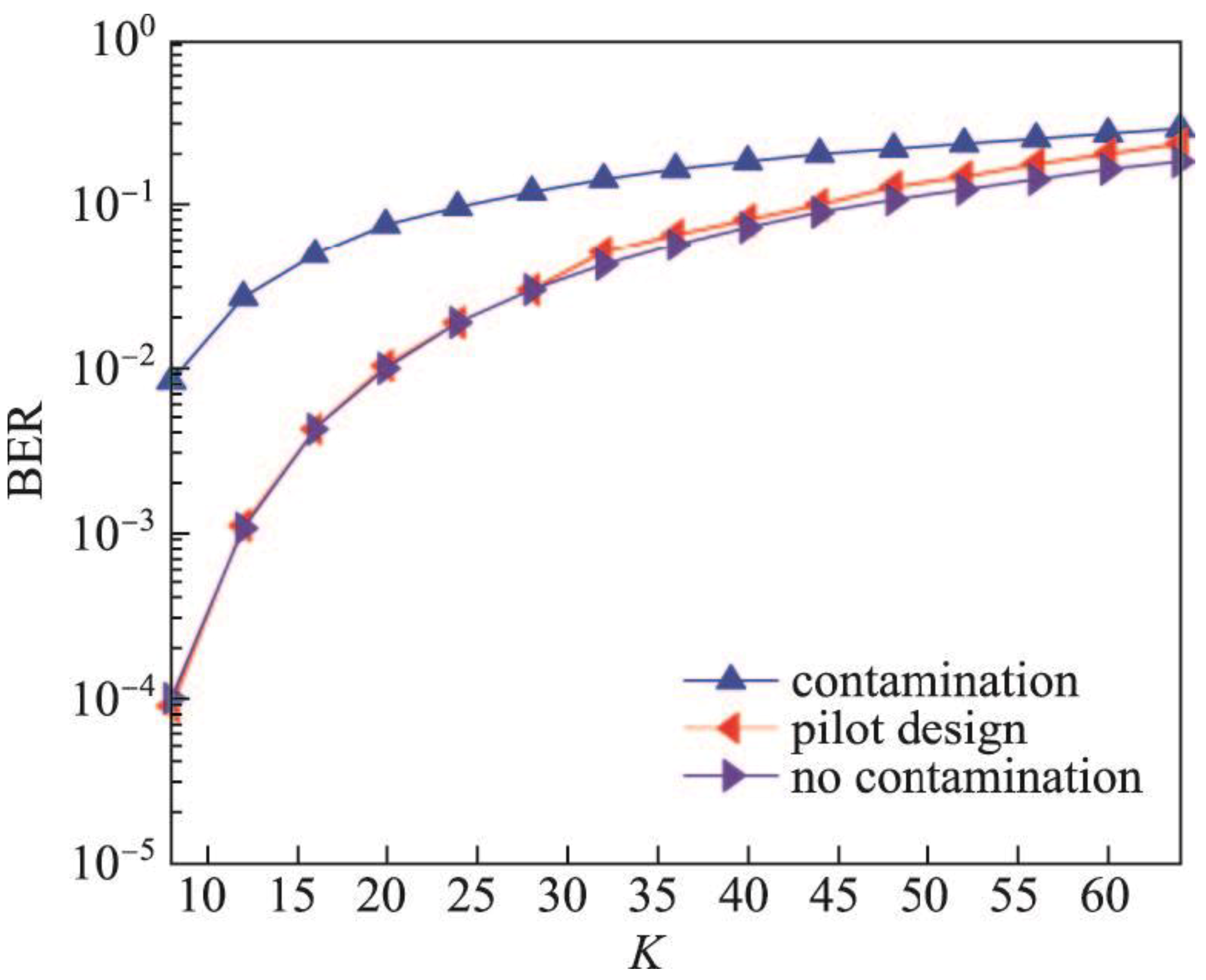
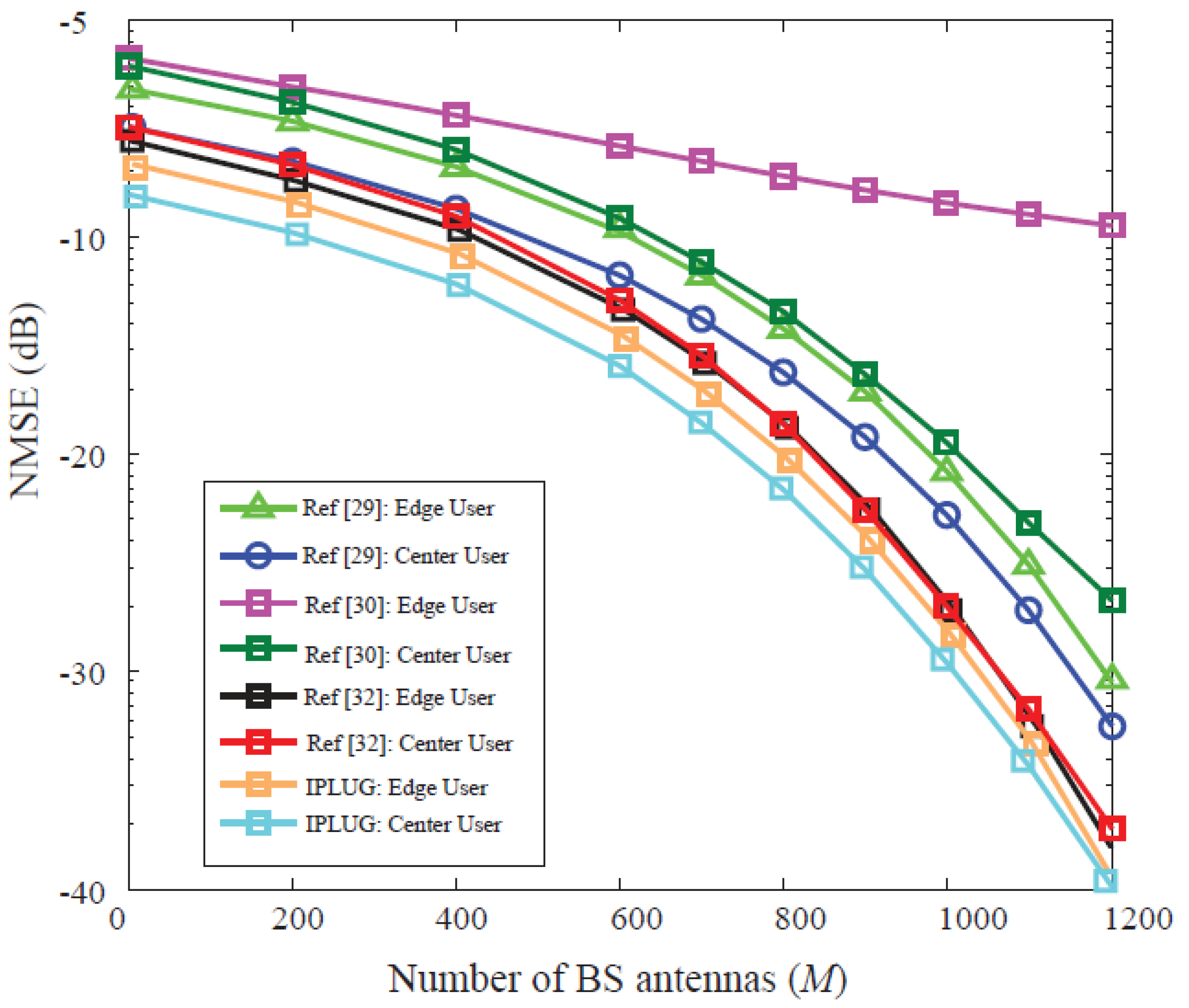
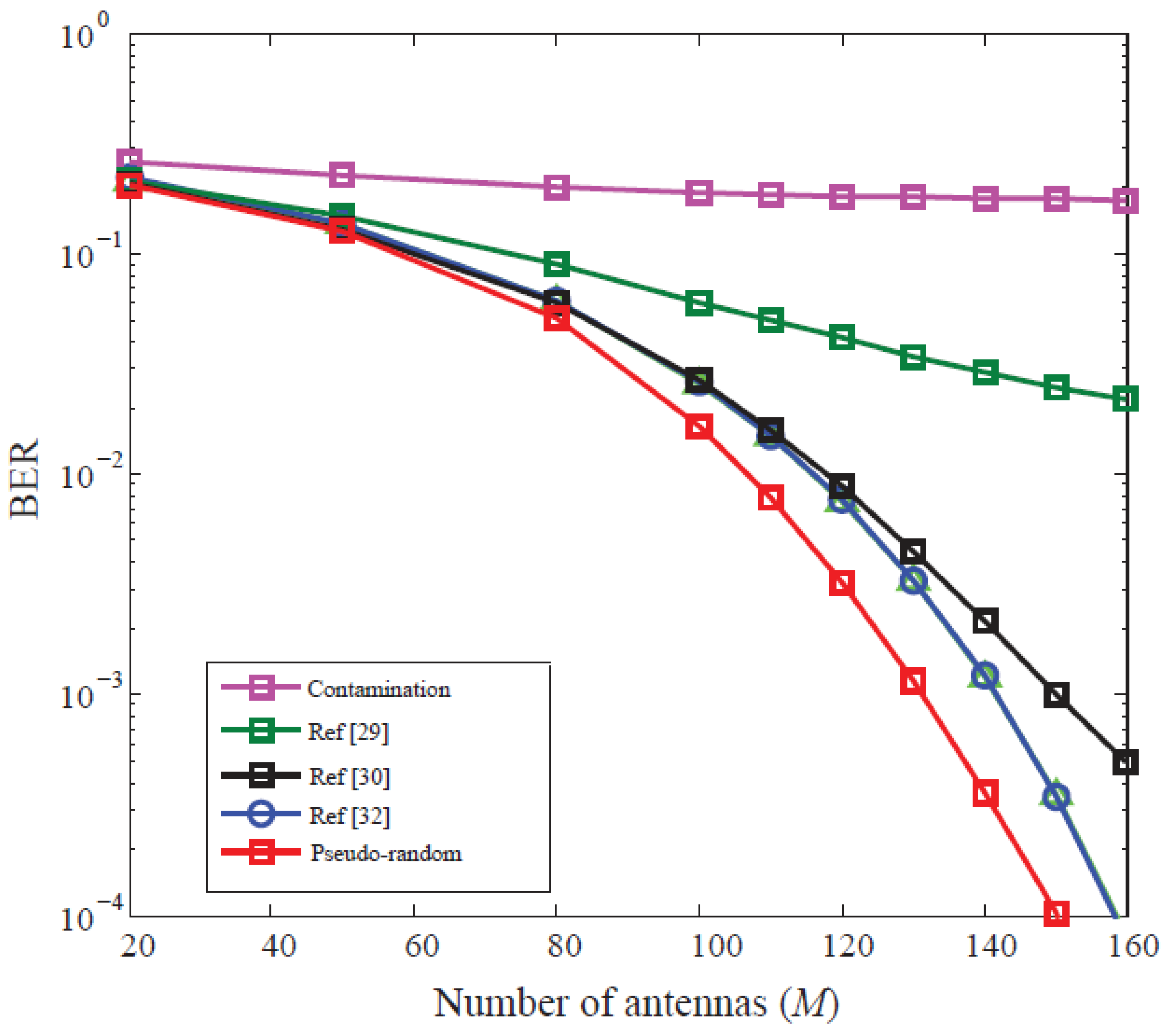
| S. No | Parameter Name | Value |
|---|---|---|
| 1 | Number of BS antennas () | 16~1024 |
| 2 | Number of users per cell () | 10 |
| 3 | Antenna Spacing | |
| 4 | Pilot Length () | 128 |
| 5 | Path Loss Factor () | 3 |
| 6 | Pilot overhead coefficient () | 0.05 |
| 7 | Cell Radius () | 1000 m |
| 8 | Lognormal Shadow Fading | 4 dB |
| 9 | Number of simulations | 5000 |
| 10 | Average transmit power at BS () | 20 dB |
| 11 | Average transmit power at User () | 10 dB |
| 12 | The upper limit of normalized cross-correlation () | 0.3 |
| 13 | Cross-gain () | 0.7 |
© 2019 by the authors. Licensee MDPI, Basel, Switzerland. This article is an open access article distributed under the terms and conditions of the Creative Commons Attribution (CC BY) license (http://creativecommons.org/licenses/by/4.0/).
Share and Cite
Saraereh, O.A.; Khan, I.; Lee, B.M.; Tahat, A. Efficient Pilot Decontamination Schemes in 5G Massive MIMO Systems. Electronics 2019, 8, 55. https://doi.org/10.3390/electronics8010055
Saraereh OA, Khan I, Lee BM, Tahat A. Efficient Pilot Decontamination Schemes in 5G Massive MIMO Systems. Electronics. 2019; 8(1):55. https://doi.org/10.3390/electronics8010055
Chicago/Turabian StyleSaraereh, Omar A., Imran Khan, Byung Moo Lee, and Ashraf Tahat. 2019. "Efficient Pilot Decontamination Schemes in 5G Massive MIMO Systems" Electronics 8, no. 1: 55. https://doi.org/10.3390/electronics8010055
APA StyleSaraereh, O. A., Khan, I., Lee, B. M., & Tahat, A. (2019). Efficient Pilot Decontamination Schemes in 5G Massive MIMO Systems. Electronics, 8(1), 55. https://doi.org/10.3390/electronics8010055






